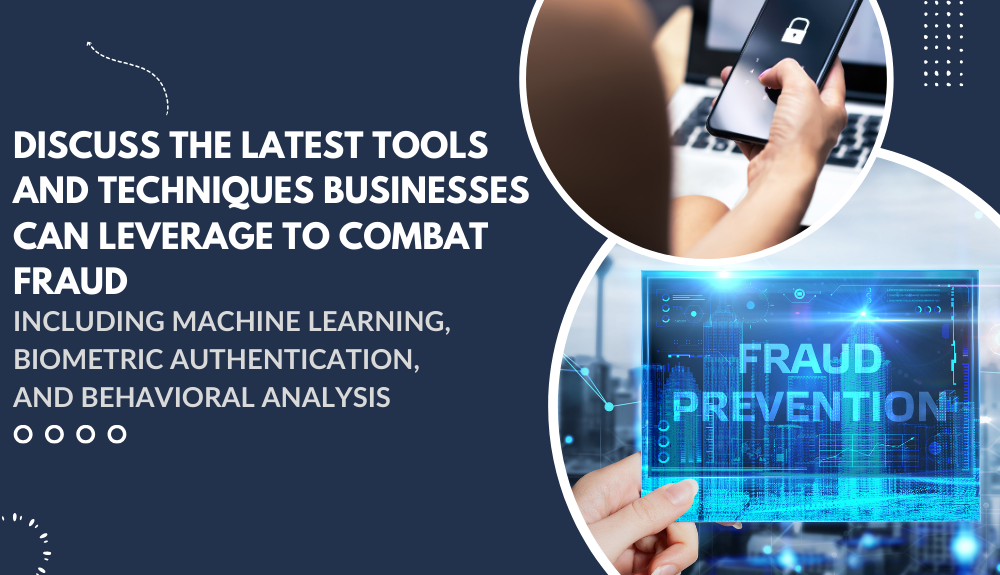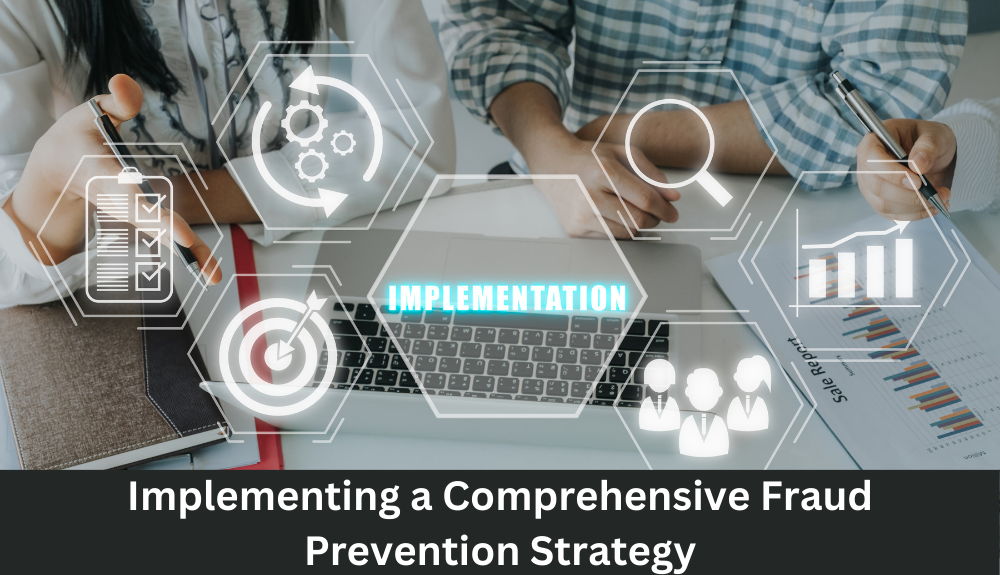
By max March 12, 2024
Fraud – a word that strikes fear in the hearts of businesses worldwide, threatening financial stability and reputation. In today’s digital age, where transactions happen at the speed of light, combating fraud requires innovative tools and techniques to stay one step ahead of malicious actors. Join us as we explore the latest advancements in technology that businesses can leverage to safeguard against fraudulent activities. Let’s dive into the world of machine learning, biometric authentication, and behavioral analysis to fortify your defenses and protect your bottom line!
Traditional Methods of Combating Fraud
When it comes to combating fraud in business, traditional methods have long been relied upon. These include manual reviews of transactions, audits, and setting up internal controls to prevent financial losses.
One common practice is the use of passwords and PINs for authentication purposes. However, with the rise of sophisticated cybercriminals, these methods are no longer foolproof.
Another traditional approach is employing a team of experts to manually sift through data looking for irregularities or suspicious patterns that may indicate fraudulent activity.
While these methods have been effective to some extent, they are often time-consuming and can miss more subtle forms of fraud. As technology continues to advance, businesses are turning towards more innovative solutions to stay ahead of ever-evolving fraudulent tactics.
The Rise of Technology in Fraud Prevention
As businesses continue to digitize their operations, the risk of fraud has also increased. However, with the advancement of technology, new tools and techniques have emerged to combat fraudulent activities effectively. The rise of technology in fraud prevention has revolutionized how organizations safeguard their assets and data.
Gone are the days when manual checks were sufficient to detect fraud. Today, sophisticated algorithms powered by machine learning can analyze vast amounts of data in real-time to identify patterns indicative of fraudulent behavior. This proactive approach enables businesses to stay one step ahead of potential threats.
Biometric authentication is another cutting-edge technology that is making waves in fraud prevention. By using unique physical characteristics such as fingerprints or facial recognition, businesses can ensure secure access to sensitive information and prevent unauthorized transactions.
Furthermore, behavioral analysis plays a crucial role in detecting suspicious activities. By monitoring user interactions and flagging deviations from normal behavior patterns, organizations can swiftly intervene before any harm is done.
Incorporating these technological advancements into a comprehensive fraud prevention strategy is essential for modern businesses looking to protect themselves from financial losses and reputational damage caused by fraudulent activities. By leveraging machine learning, biometric authentication, and behavioral analysis tools effectively, companies can fortify their defenses against ever-evolving threats posed by cybercriminals.
Machine Learning and its Role in Identifying Fraudulent Activity

In the world of combating fraud, machine learning has emerged as a game-changer. By analyzing vast amounts of data at high speeds, machine learning algorithms can detect patterns and anomalies that human analysts might overlook. This technology is constantly evolving, becoming more sophisticated in identifying fraudulent activities across various industries.
Machine learning algorithms can adapt and learn from new data inputs, making them highly effective in staying ahead of ever-changing fraud schemes. These algorithms can sift through massive datasets to uncover subtle correlations and trends that point towards potential fraud incidents.
One key advantage of using machine learning for fraud detection is its ability to automate the process. This automation saves time and resources while providing real-time insights into suspicious activities. Businesses can leverage this technology to enhance their fraud prevention strategies and protect themselves from financial losses.
As machine learning continues to advance, it promises even greater accuracy in identifying fraudulent behavior before it causes significant harm. Its role in detecting complex patterns and predicting future fraudulent activity makes it an invaluable tool for businesses looking to stay one step ahead of cybercriminals.
Biometric Authentication and its Advantages in Fraud Prevention
Biometric authentication has revolutionized the way businesses combat fraud. By using unique physical characteristics like fingerprints, facial recognition, or iris scans, companies can ensure secure access to sensitive data and transactions. These methods are extremely difficult to replicate or forge, making it nearly impossible for fraudsters to gain unauthorized access.
One of the key advantages of biometric authentication is its accuracy and reliability. Unlike passwords or PINs that can be easily forgotten, stolen, or shared, biometric data is inherently tied to an individual and cannot be altered. This significantly reduces the risk of fraudulent activities carried out by imposters.
Moreover, biometric authentication provides a seamless user experience without compromising security. Employees and customers alike can verify their identities quickly and conveniently with just a touch or glance – eliminating the need for cumbersome login processes while ensuring robust protection against potential threats.
As technology continues to advance, leveraging biometric authentication will become increasingly vital in safeguarding businesses against evolving forms of fraud. Its combination of convenience and security makes it a powerful tool in today’s digital landscape.
Behavioral Analysis and its Effectiveness in Detecting Suspicious Behavior
Behavioral analysis is a cutting-edge tool that businesses are using to stay one step ahead of fraudsters. By analyzing patterns in user behavior, companies can detect unusual activities and flag them as potential risks.
This technique goes beyond traditional security measures by considering how individuals typically interact with systems or devices. It looks for anomalies like sudden changes in spending habits, login locations, or transaction frequencies.
The advantage of behavioral analysis is its proactive approach to identifying suspicious behavior before any actual harm occurs. Rather than simply reacting to incidents after they’ve happened, this method allows organizations to anticipate and prevent fraudulent activities in real-time.
In today’s digital landscape where cyber threats continue to evolve, leveraging behavioral analysis can provide a significant edge in safeguarding sensitive data and financial assets against malicious intent.
Implementing a Comprehensive Fraud Prevention Strategy

Implementing a comprehensive fraud prevention strategy is crucial for businesses of all sizes to protect themselves from potential financial losses and reputational damage.
One key aspect of this strategy is to conduct regular risk assessments to identify vulnerabilities within the organization’s processes and systems. By understanding where weaknesses lie, companies can proactively address potential areas of exploitation.
Training employees on fraud awareness and fraud prevention techniques is another vital component. Educating staff on how to recognize suspicious activities and report them promptly can serve as an effective line of defense against fraudulent behavior.
Utilizing advanced technology solutions such as AI-powered monitoring tools can help automate the detection of irregular patterns or anomalies in transactions, enabling swift action to be taken before significant harm occurs.
Collaborating with industry experts and staying up-to-date on the latest trends in fraud tactics can also enhance a company’s ability to stay ahead of evolving threats. By fostering a culture of vigilance and proactive risk management, organizations can significantly reduce their susceptibility to fraud schemes.
Future Advances in Fraud Prevention Technology
As technology continues to advance, the future of fraud prevention looks promising. Innovations such as machine learning, biometric authentication, and behavioral analysis are revolutionizing how businesses combat fraudulent activities. By leveraging these cutting-edge tools and techniques, organizations can stay one step ahead of cybercriminals and protect their assets effectively. As we move forward, it’s crucial for businesses to adapt and integrate these advancements into their fraud prevention strategies to safeguard their operations in an increasingly digital world. Stay informed, stay proactive, and stay secure against evolving threats in the realm of fraud prevention technology.
